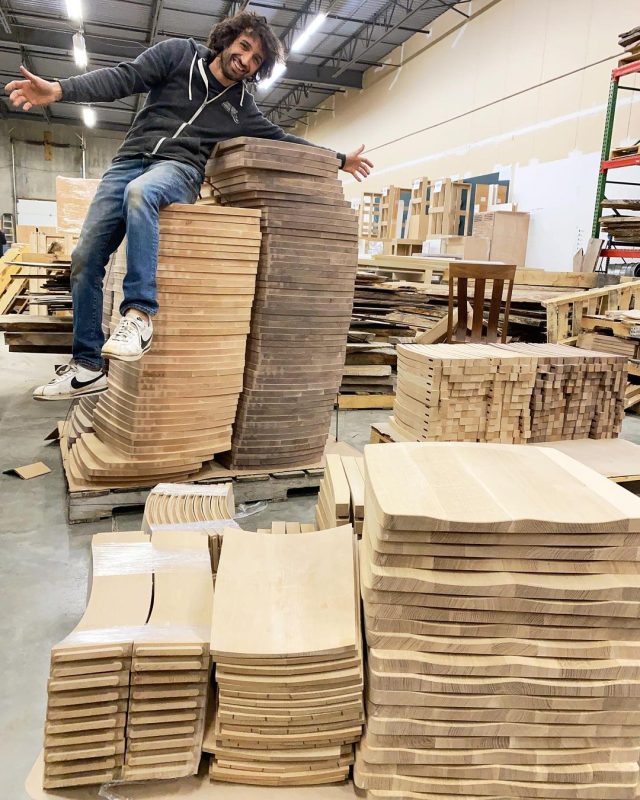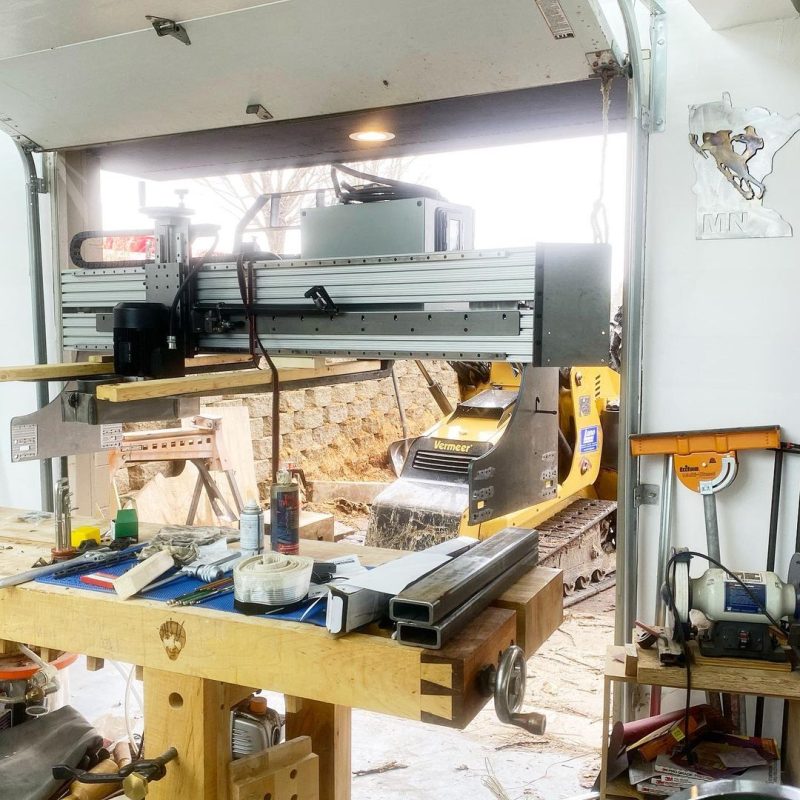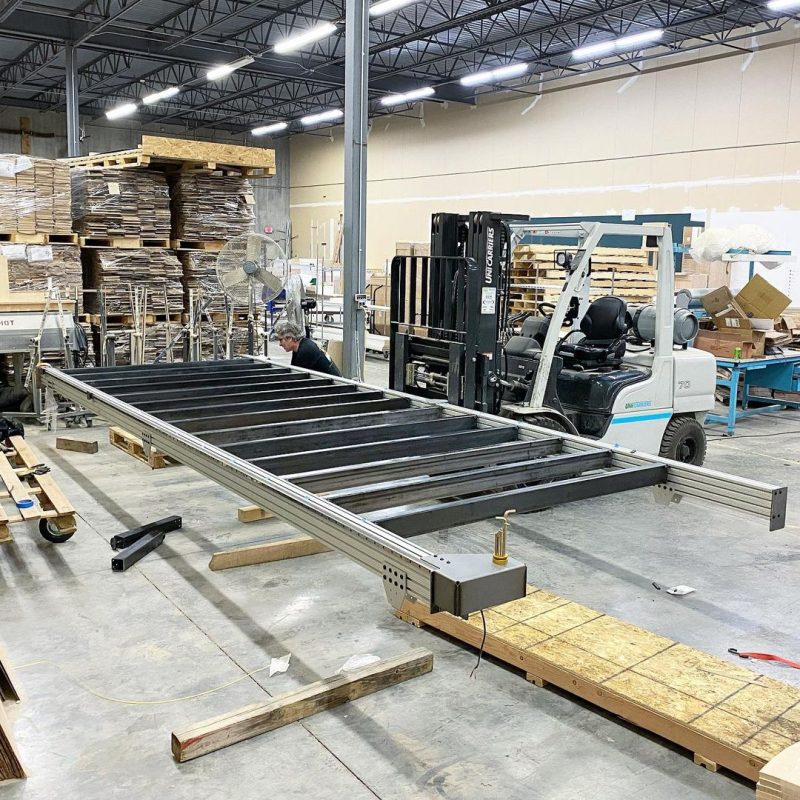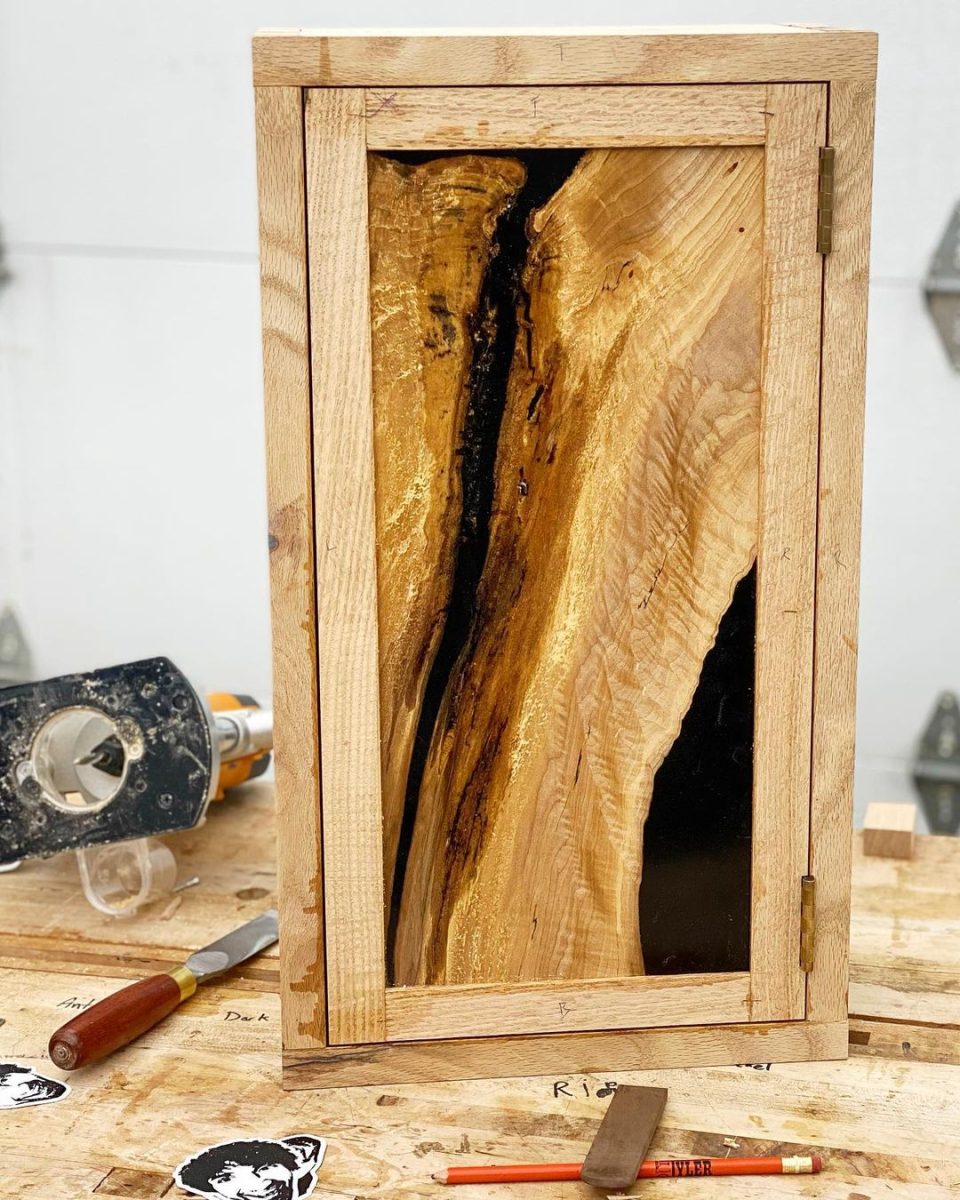Starting a Sawmill Business from the Ground Up | Tour of Ruben Custom Sawmill by Matthew Cremona
Hi, I’m Matt Ruben from Denmark Township, Minnesota, and I started a sawmill business from scratch, and that’s what we’re gonna talk about today and see where the business is at. I do portable milling and custom projects and I have a vacuum kiln from iDRY, and that is the main focus of the business, selling slabs, doing projects, and milling for people.
How Did You Get Started With This?
I wanted to start a business to get an extra income for my family and complete all these projects that I wanted to do. I thought about selling chickens and a Christmas tree farm, but one day I saw a video on Youtube about a one-man sawmill operation. After watching his video, I decided to do what he is doing.
I had never sawn a log before, I’d taken woodworking class in high school, but at the time when I bought my sawmill, the only tools I had for woodworking were a Bosch Jigsaw and a really crappy table saw.

Sawmill to Start With
I bought the Wood-Mizer LT40. After getting the sawmill, I didn’t have any logs to cut but I just literally jumped in. The first piece of wood that I ever cut was of a branch of my tree and after that, I started to cut down some of the dead trees on my property. I’d never cut down trees before, so I had to go back on YouTube to figure that out. But that’s how that started, and then I just spent the entire summer of 2018 collecting logs and finding people that would get me logs.
So for 3 months now, I’ve been doing woodworking full time. This idea was just a thought that I had actually exactly one year ago. October probably is the best sales month that I’ve had up until now, and that’s when I thought about doing this full-time and being sustainable. The only missing piece that was the big router table, which I got in June of this year.
Knowing When to Go Full-Time
One day, I just had a feeling when I went to work that was gonna be the day to quit. And the funny thing is, my boss asked me that day, “How’s business going?” I said, “It’s going really well, but I can’t keep up.” And then two hours later, I went into his office and said, “I’m sorry, but I’m done, I can’t do it anymore.”
I knew it was coming, it was just a matter of time, and I could just feel it building up inside. It’s pretty rough to know that you can do it on your own, but you’re not quite sure if it’s the right decision. But it has been so far, it’s been awesome for these first three months.
So when I first started collecting logs, all the logs would get dumped in the driveway, I didn’t have the skid steer, which I now have owned for two years, so I would collect logs, dump them in the driveway and then chain them and drag them to the mill.

WorkShop
My current workshop is 13 feet wide and 30 feet long, It’s not very big, but I’ve got enough space to do some projects, I’ve got pretty much all the tools in here that I can handle. The biggest piece of machinery in here is the 25-inch Helical Head planer, which has been awesome for me. That’s my way of planning slabs for customers to get them ready so I’ve sold a lot of wood just out of this little tiny shop.
My sawmill shed is just an old 36 by 24 shed. I took down the wall on the far side to have logs come into the sawmill, and on the other side where the sawmill sits, that’s where I mill everything. If you come inside, it’s a sawmill on one end, I got a little storage bay in the middle, and then on the left side here is my big slab flattening machine from Black Horse Designs. This was the piece of equipment that set me into going full-time.
So I plane the slabs, they go up on the wall, and that’s how I sell my stock right now. I don’t have a lot of stock right now, it’s been going pretty fast, but this is how I’m at right now with selling slabs and getting customers to pick out projects from them. Every single log that I saw for myself, I have gone out and got myself. I have not had a single person drop off a log for me, I’ve had people deliver logs for their milling purposes, but everything that I’ve sawed up has been me going out and getting it.
My sawmill is the same sawmill I had back then, I just made a little modification to it that I saw in Canadian Woodworks. They had modified their mill to make it extendable, they added in a 10-inch extension roughly, so I can cut 37 inches wide now. I can still trailer it. We modified this to go a little wider for the trailing stop. You’d never know that he did any work on it, it’s never had a problem since he’s done it. Never had to make any sort of adjustment. So if you know a really good welder and you have a mill that you want wider, I would recommend it.
Portable Milling
Most of the time people have never had a sawyer come out, they have no idea what the process is, and they have no idea what they can do with the tree or the log. So I have to educate them on what’s possible based on what they have, and then I try to figure out a drying plan for them. I can’t dry for people ’cause I don’t have the capacity, but I try to make them understand that that is part of the process. So it’s not just cutting the logs for them, it’s really just educating them about the entire process.

I have a three-hour minimum and then I charge for mileage, but people are just usually really happy to use the trees that they had in their yard. And I was actually just down in Iowa last week when I milled a five-foot oak log.
Once the log was on the mill, it was 15 minutes of milling, and I drove eight hours and they were the happiest customers I’ve ever had. It’s funny how that aspect of the business works out, but it’s been fun to just get out on the road and meet people like that. So that’s where I’m at with that.
Most Important Part of the Business
So the most important part of the business is drying. I have waited for so long to get this iDry. It’s in a 40-foot shipping container, it’s nine feet high and then I insulated all the way around so that it doesn’t freeze up in the winter and it’s a little bit more efficient that way. The iDry process of releasing the vacuum and draining the kiln is about 15 to 20 minutes. On a full charge, wet wood, we’re getting like 10, 15 gallons a day that comes out right away.
The cost to run the kiln between the summer and winter is between $400 and $500 per month, somewhere in that range. So if you can get anywhere from 2,000 to 4,000 board feet through it in a month, it’s really really not expensive at all.
One of the awesome things about the vacuum kilns is that they’re able to dry things a lot faster than any type of conventional way of air drying. A conventional kiln, DH kiln, solar kiln, even just air drying has a certain speed limit that you really can’t exceed or else you’ll degrade the quality of the wood. But in vacuum kilns, you can go quite a bit faster without any kind of degradation because of the magic of lowering that boiling point.
Until next time, happy working!
IG: @mattcremona

